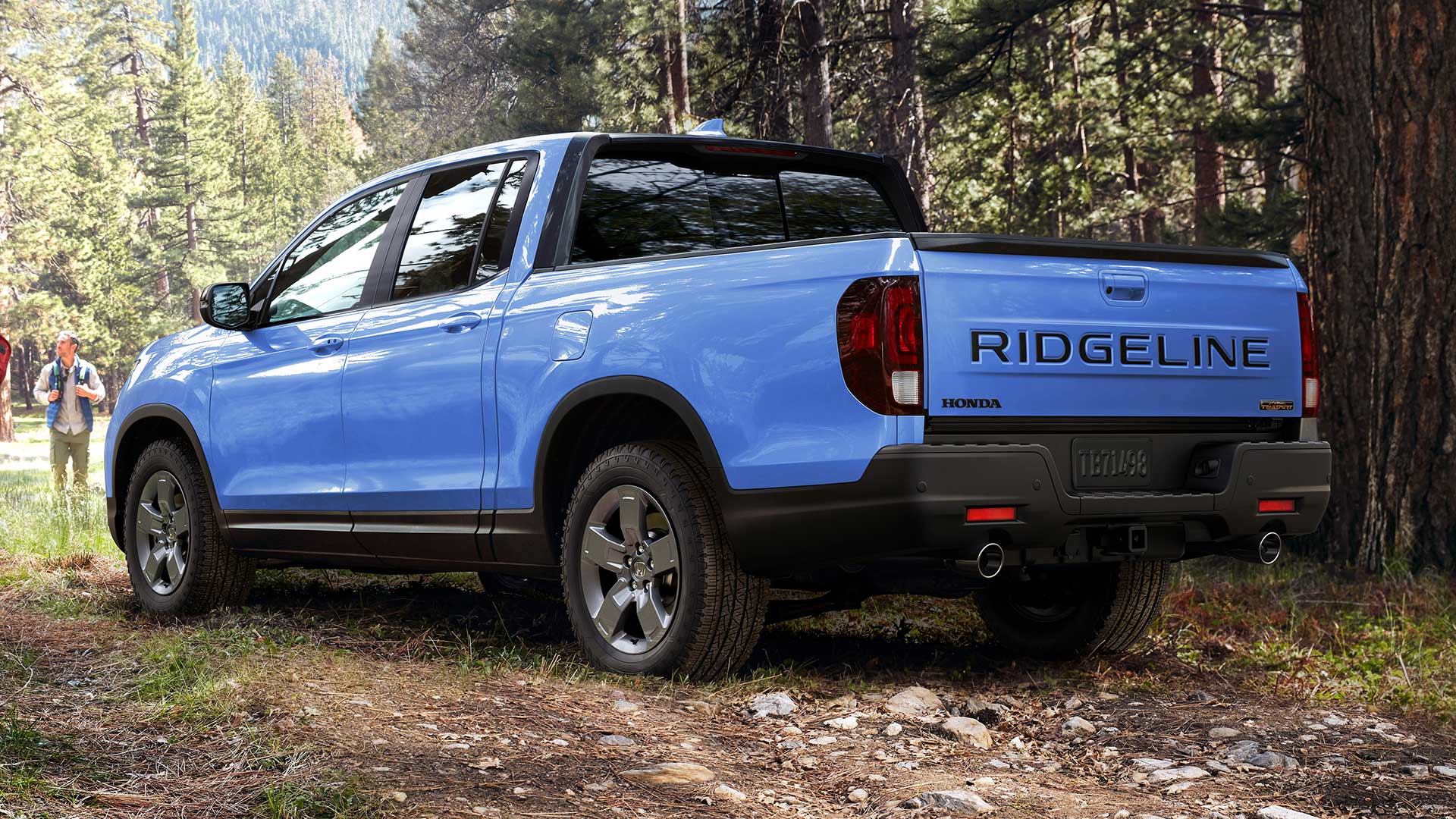2022 Chevrolet Bolt EUV
One Of The Best Bargains In Green Motoring
There’s no denying, the Chevrolet Bolt, when it arrived for 2017, was a true game-changer; delivering real-world range to the masses like no EV before it. It only makes sense that GM would want to spread the love into the SUV category, it just took a little longer than we were expecting, but the Chevrolet Bolt EUV is finally here!
First thing to know about the 2022 Chevrolet Bolt EUV is that it’s essentially just a slightly bigger version of the pioneering Bolt EV. It’s 6.3-inches longer; but more importantly, there’s an additional 3-inches of wheelbase, which provides more space inside.
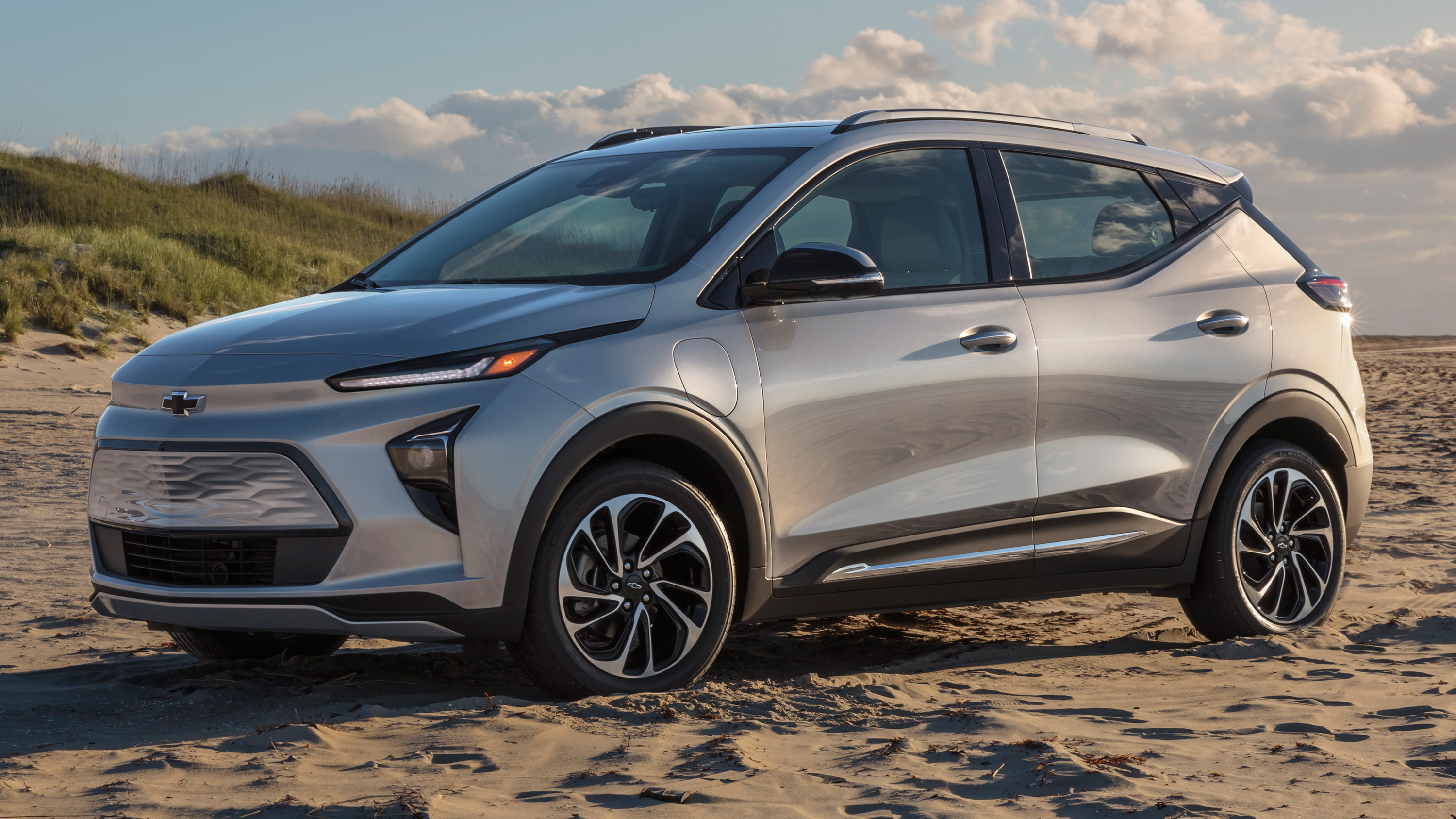 Second thing to know is there’s no all-wheel-drive; so, it’s more of an urban utility vehicle, designed with the space and comfort to make daily tasks and weekend errand running easier. So, it’s not a utility intended to get you far off the beaten path.
Second thing to know is there’s no all-wheel-drive; so, it’s more of an urban utility vehicle, designed with the space and comfort to make daily tasks and weekend errand running easier. So, it’s not a utility intended to get you far off the beaten path.
Back when we first tested the Bolt EV, we felt that it was very utility-like; now of course the EUV has made it even more so; though oddly enough, all of that additional room goes strictly to rear seat passenger legroom, as cargo space is actually a tick less in the EUV at 16.3 cubic-ft., down from 16.6. And you can tell rear passenger comfort was the EUV’s priority. While it shares the same basic profile shape, the rear doors are noticeably longer. But, the EUV brings a lot more than just additional rear seat legroom; it arrives with a load of updates, many shared with the Bolt EV.
The hood, as well as both front and rear fascias, have been tweaked slightly, headlamps are updated, and there are new wheel choices. Inside, there’s a new dash with updated infotainment touchscreen that’s now 10.2-inches, as well as a different control layout. While the center console now rises to meet the dash, and replaces the shifter with a row of buttons including a new one for 1-pedal driving. The EUV was also the first non-Cadillac to have SuperCruise available; in top Premier trim naturally. Though it’s still an older generation than currently available to Caddy buyers, so no 1-touch lane changes.
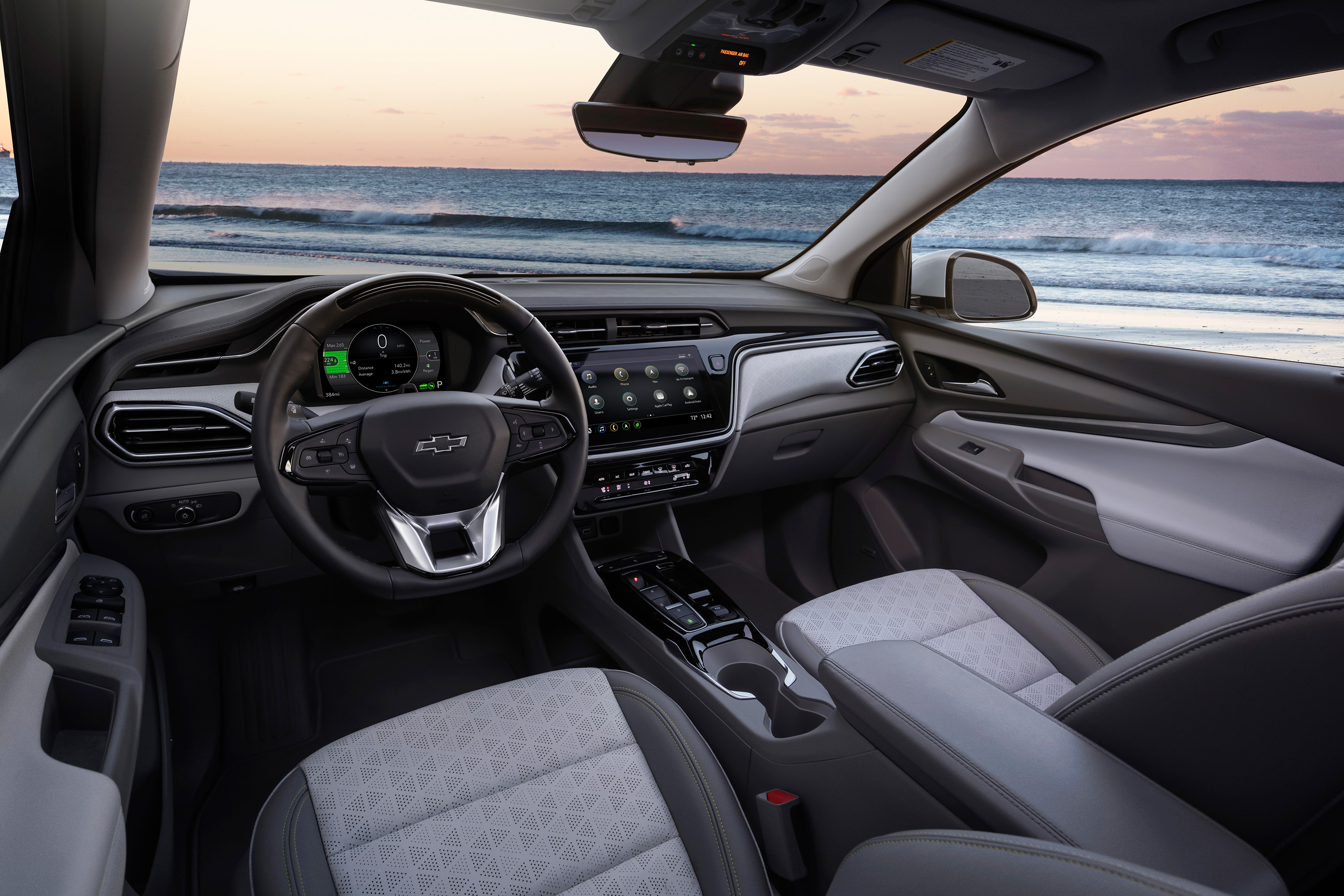 Premier trim also includes leather seating, surround view camera, and heated steering wheel; though wireless phone charging is standard on all. And due to customer demands, a sunroof is available in the EUV, as part of a Sun and Sound package that includes navigation and Bose premium audio.
Premier trim also includes leather seating, surround view camera, and heated steering wheel; though wireless phone charging is standard on all. And due to customer demands, a sunroof is available in the EUV, as part of a Sun and Sound package that includes navigation and Bose premium audio.
The EUV does share the EV’s powertrain, and as you may have heard, all Bolts were recalled and EUV production was held up due to potential fire concerns with the LG-supplied battery. But, that has since been rectified, and GM added a little range to all Bolts for good measure.
The EUV is officially rated for 247-miles of range, which seems more than reasonable as we were on track for 270 miles before recharging. Its efficiency score is also quite efficient at 29 kWh/100 miles. That 247-mile range is actually 9 miles more than the Bolt EV had when it debuted, and its range has also increased from 238 to 259-miles.
No changes for the front-mounted 150-kW motor, as it outputs the same 200-horsepower and 266 lb-ft. of torque here in the EUV. The EUV’s bigger size equates to a slightly slower 0-60 time of 7.2-seconds; but it still feels quite peppy compared to traditional small ICE crossovers. Still, keeping the accelerator pinned for the entire ¼-mile is not exactly thrilling, as power delivery stays more moderate than aggressive; but the hyper-responsive steering does keep things interesting. Our best pass was 15.7-seconds at 90 miles-per-hour.
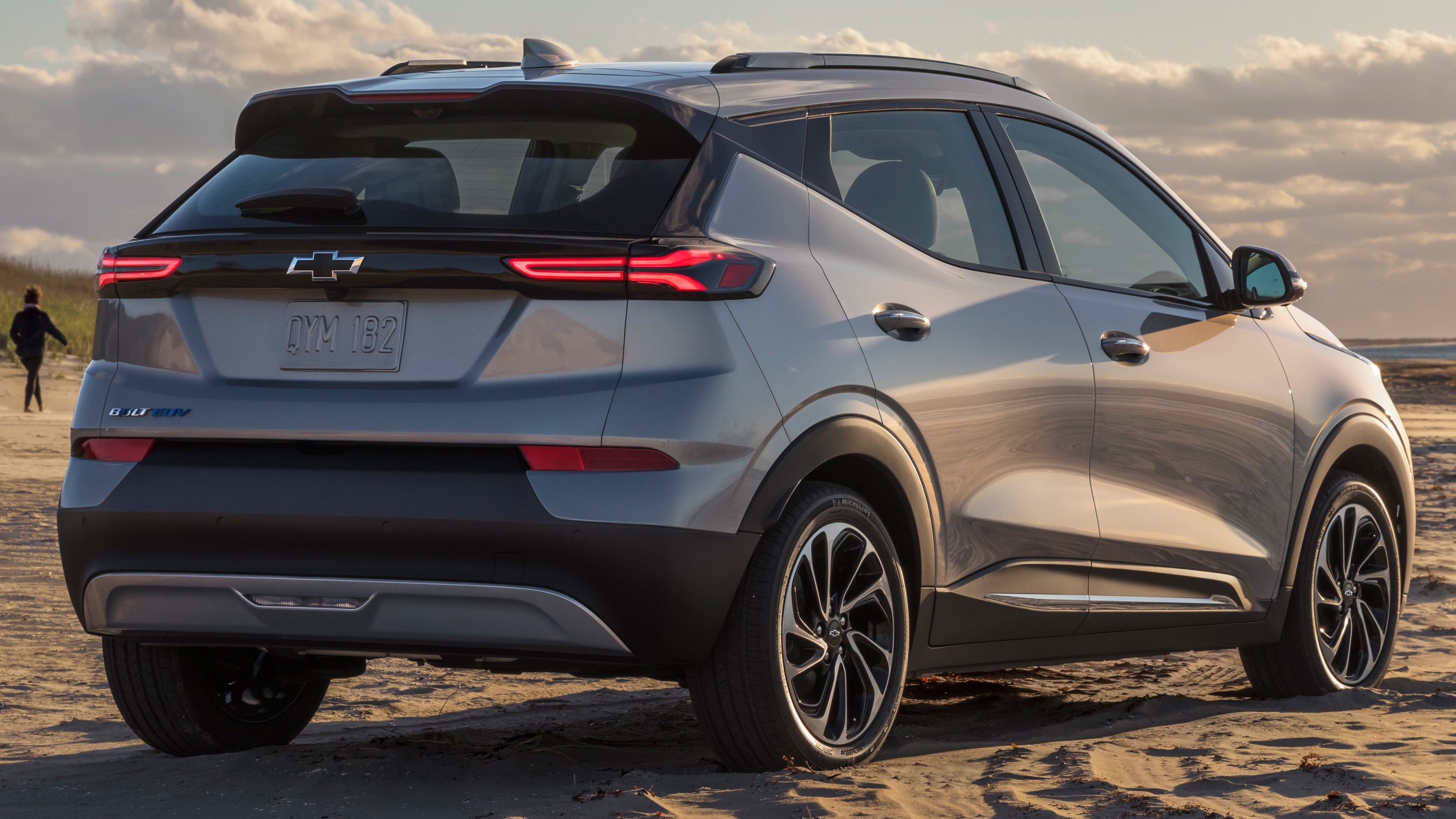 The Bolt EV was an adequately fun car to dart around traffic in, but when pushed to its limits would understeer quite a bit. The longer wheelbase of this EUV doesn’t seem to have improved on that, and there appears to be a little more body roll here too. Not much about the handling experience screams “sport-tuned” but the low-mounted weight of the batteries still lends a solid overall feel, and steering weight was actually quite good. Panic braking stops from 60 averaged a longish 120-feet, with significant nose dive, and lots of ABS pedal pulsing.
The Bolt EV was an adequately fun car to dart around traffic in, but when pushed to its limits would understeer quite a bit. The longer wheelbase of this EUV doesn’t seem to have improved on that, and there appears to be a little more body roll here too. Not much about the handling experience screams “sport-tuned” but the low-mounted weight of the batteries still lends a solid overall feel, and steering weight was actually quite good. Panic braking stops from 60 averaged a longish 120-feet, with significant nose dive, and lots of ABS pedal pulsing.
Things really get interesting when it comes to EUV pricing, with the base LT starting at just $28,195; that’s less than the Bolt cost 5-years ago when it debuted; so naturally Bolt EVs get a corresponding price cut to just $26,595 to start.
The Chevrolet Bolt EUV surely won’t grab as much attention as the Hummers, Mach Es, and Teslas of the EV world. But we think it is still one of the best all-around, everyday EVs out there; and certainly, a clear bargain when it comes to green motoring. And we’re going to need a lot more entry-level EVs like the Bolt EV and this EUV if society is truly serious about wanting an all-electric driving future.
Specifications
- Battery: 65.0-kWh
- Motor Setup: Single Front Mounted 150kW
- Horsepower: 200
- Torque: 266 lb-ft
- 0-60 mph: 7.2 seconds
- 1/4 Mile: 15.7 seconds at 90 mph
- 60-0 Braking: 120 feet (avg)
- EPA: 247 miles
- MW Range: ~ 270 miles
- MW Efficiency: 29 kWh/100 miles
2024 Honda Ridgeline TrailSport
It Does Truck-Like Things Better Than Ever
Honda brought something truly unique to the pickup truck scene when their mid-size Ridgeline debuted for 2006. In 2017, it moved towards becoming a little more true truck-like, both in form and capability, now with yet another step in that direction for 2024. So, let’s see if the Ridgeline is really hitting its stride.
For 2024, it’s all about making this Honda Ridgeline better than ever. There are styling tweaks outside, along with tech and functional improvements inside, but the biggest news is the Ridgeline has now joined Honda’s TrailSport family of off-road inspired vehicles. This more-true-trucklike, second-gen Ridgeline been around since 2017, receiving periodic updates over the years; but joining the TrailSport family is the biggest leap yet.
Primarily, the TrailSport transformation includes General Grabber all-terrain tires, mounted on new Pewter Gray 18-inch wheels, steel underbody protection, and retuning the strut front, and multi-link rear suspension for added wheel articulation. And while we always appreciate the additional traction of off-road tires, the Ridgeline’s standard i-VTM4 all-wheel drive, with Intelligent Traction Management and snow, sand, and mud settings, was already quite capable of handling all but the most extreme off-roading, ground clearance of just 7.6 inches being it’s only real hinderance.
A 3.5-liter V6 remains under the hood as it has since the Ridgeline debuted for 2006; the current version outputs 280 horsepower and 262 lb-ft of torque, plenty enough muscle to handle its 5,000-lbs. towing capacity. A nine-speed automatic transmission with paddle shifters and bevy of push and pull buttons on the console replaced the six-speed automatic back in 2020.
In addition to adding TrailSport capability, a big focus for this update was making it more user-friendly inside, starting with the central touchscreen growing from 8 to 9 inches. It also gets faster processing speeds, menus have been simplified, and the native navigation system is improved with better graphics. It’s accompanied by a new digital instrument cluster, along with an upgraded center console with more storage space. Unique TrailSport touches include heavy duty floormats, leather-trimmed seats, orange stitching throughout the cabin, and orange ambient lighting.
The Ridgeline continues to offer things available nowhere else in the pickup truck market.
Exterior styling doesn’t exactly shout “macho big rig coming your way,” but the more vertical face and larger grille that arrived for 2021, along with this year’s added TrailSport elements, do continue to toughen up the Ridgeline’s image. The 5’4” bed remains highly functional with no large wheel well intrusions, multiple tie-downs points, lighting and even speakers. And of course, the Ridgeline continues to offer things available nowhere else in the pickup truck market, like the dual-action tailgate, and large, lockable, drainable, underbed storage. Not to mention being able to drive around in true car-like comfort, something we took full advantage of on our way to our Mason Dixon Dragway test track.
There was great grip off the line, with full power arriving smoothly but quickly, helping us to get to 60 in 7.0 seconds flat, a tenth quicker than the last Ridgeline we tested. That power delivery stayed fairly consistent the whole way down the track, barely interrupted by the nine-speed automatic’s smooth shifting. Our best quarter-mile run was 15.5 seconds at 90 mph.
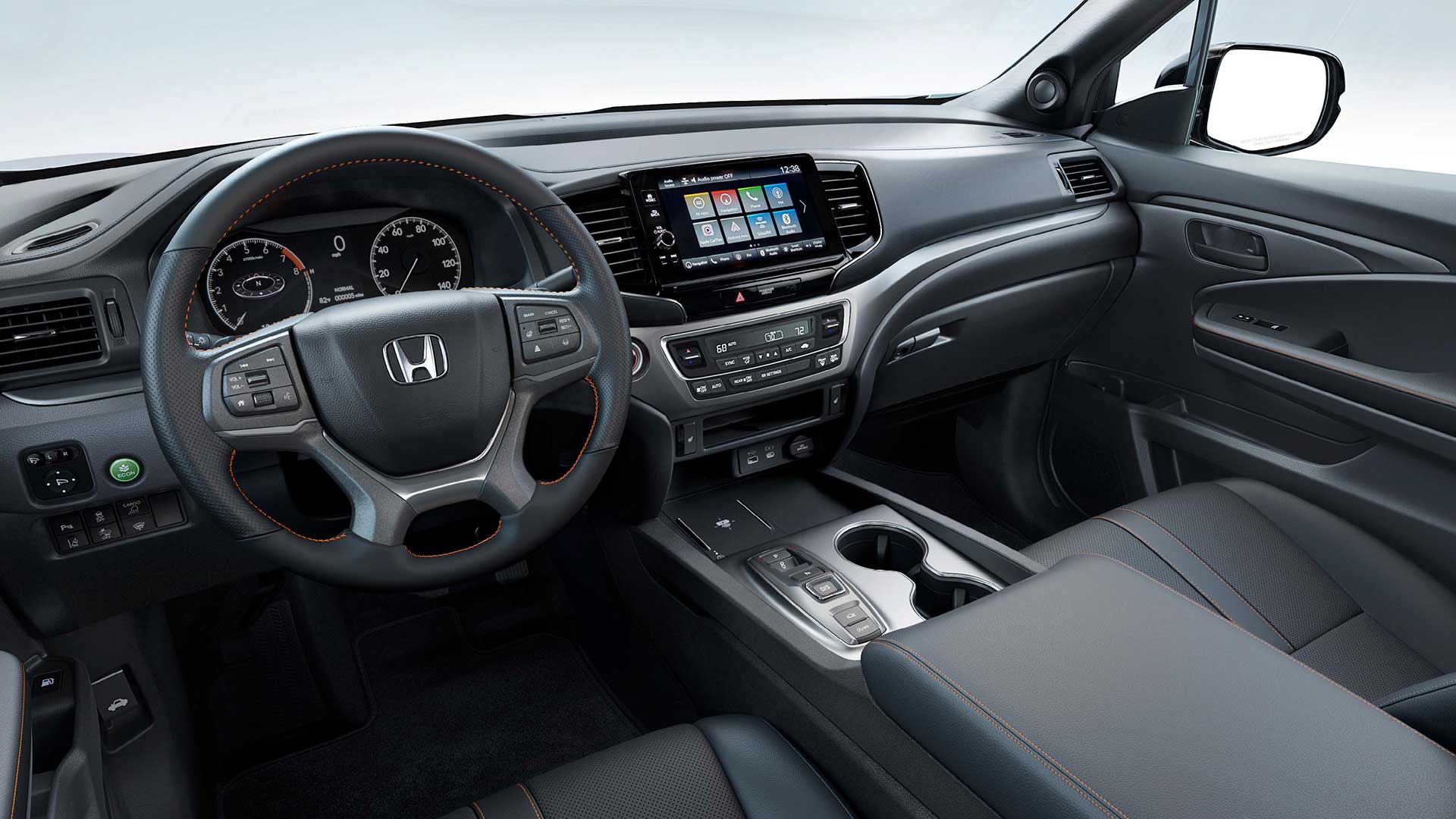
The revised suspension and knobbier tires didn’t really seem to add or detract from handling prowess, as it felt as solid, nimble, and car-like as it always has through our cone course. Perhaps a little less stiff than before, but good feedback, tight steering, and minimal body roll for a pickup, made for a very confidence inspiring experience. In our braking test, we stopped in a respectable average of 123 feet from 60, with only moderate amounts of nosedive and good feel through the pedal.
There is, however, a slight reduction in Government Fuel Economy Ratings with the all-terrain tires; 18-City, 23-Highway, and 20-Combined, our average, right on, at 20.4 mpg of Regular. That’s a slightly below average Energy Impact Score of 14.9 barrels of yearly oil use, with CO2 emissions of 7.4 tons.
TrailSport pricing falls in line just under the Ridgeline’s top Black Edition trim with a starting price of $46,375, about five grand over a base Ridgeline Sport.
So, whether you consider the Honda Ridgeline to be a “real” truck or not, this ruggedly smooth 2024 TrailSport does truck-like things better than ever. And we’re not just talking about the slight upgrade in off-road performance, we’re talking about a flexible bed to help you get chores done, and the ability to tow or haul with comfort and flexibility other trucks can only wish for. It’s why the Ridgeline brings more first-time buyers to Honda than any other vehicle, and why it continues to be a great choice in the growing midsize truck realm.
Specifications
- Engine: 3.5-liter V6
- Transmission: 9-speed automatic
- Horsepower: 280
- Torque: 262 lb-ft
- EPA: 18 City | 23 Highway | 20 Combined
- 0-60 mph: 7.0 seconds
- 1/4 Mile: 15.5 seconds at 90 mph
- 60-0 Braking (avg): 123 feet
- MW Fuel Economy: 20.4 mpg (Regular)
- Max Towing Capacity: 5,000-lbs









